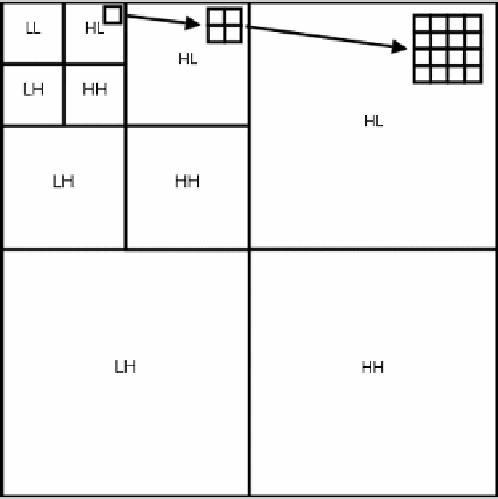Information Technology Reference
In-Depth Information
5.2.3 Parent-Child Rela
ationships
Since each subband repr
component, coefficients w
underlying picture and he
is most productive to rel
terms of combination of h
below, showing the situa
filtered horizontally and lo
resents a filtered and subsampled version of the fram
within each subband correspond to specific areas of th
ence those that pertain to the same area can be related.
late coefficients that also have the same orientation i
high- and low-pass filters. The relationship is illustrate
ation for HL bands i.e. those that have been high-pa
ow-pass filtered vertically.
me
he
It
in
ed
ss
Fig. 9
Parent-child relationsh
hip between subband coefficients [8]
In the diagram it's ea
coefficient (the parent) in
of coefficients (the childr
has a 2x2 block of child c
relates closely to spect
especially) significant c
positions related by the p
position of the feature.
These factors suggest
to take their parents into
a
coding from low-freque
coding parent before chil
in these ways without add
asy to see that the subsampling structure means that
the lowest HL band corresponds spatially to a 2x2 bloc
ren) in the next HL band, each coefficient of which itse
coefficients in the next band, and so on. This relationshi
tral harmonics: when coding image features (edge
oefficients are found distributed across subbands, i
parent-child structure, and corresponding to the origin
a
ck
elf
ip
es,
in
nal
that when entropy coding coefficients, it will be helpfu
account in predicting how likely, say, a zero value is. B
ncy subbands to high-frequency ones, and hence b
ld subbands, parent-child dependencies can be exploite
ditional signalling to the decoder [8].
ful
By
by
ed

Search WWH ::

Custom Search